What is it good for?
- Coming up with ideas for potential solutions
- Visualising ideas
- Working out what to test with your users
- Getting your team involved
When to use it
At the start of the Define phase. Once you understand what challenges your users are facing, you feel you have a good understanding of your users’ behaviours and needs, you’ve tested your key assumptions and you have developed your 'how might we' statements.
How to use it
To start generating ideas, we use a tool called Rapid 8s. It's a fun and effective way to get your team's ideas down in sketch form. Don't worry about artistic skills—simple scribbles and stick figures work perfectly.
What you need: A4 paper Sticky dots Sharpies

Round one
- With your team, take an A4 piece of paper each. Fold it in half 3 times.
- Unfold the paper—you should have 8 small "windows." Use these either as steps in a process or as spaces for individual ideas.
- Set a timer for five minutes and ask everyone to start drawing with a Sharpie (using a thick pen keeps details minimal) ideas that might solve your chosen problem.
- When time's up, have everyone explain their ideas to the group. Since it may take time for people to feel comfortable, feel free to run multiple rounds.
Time for a second round?
- Get a fresh piece of paper and ask everyone to select their favourite idea from their previous sketches to develop further.
- Set a timer for eight minutes and sketch away!
- Display the sketches on a wall, or use collaborative tools like Miro or Mural for remote teams. Have everyone present their ideas to the group.
Voting time!
- Give everyone three dots (physical or digital on Miro or Mural) to vote on their favorite ideas or elements from the team's sketches.
The ideas with the most dots are worth exploring further, but be sure to conduct additional prioritisation.
Once you've done this you can develop some basic prototypes to test with users.
